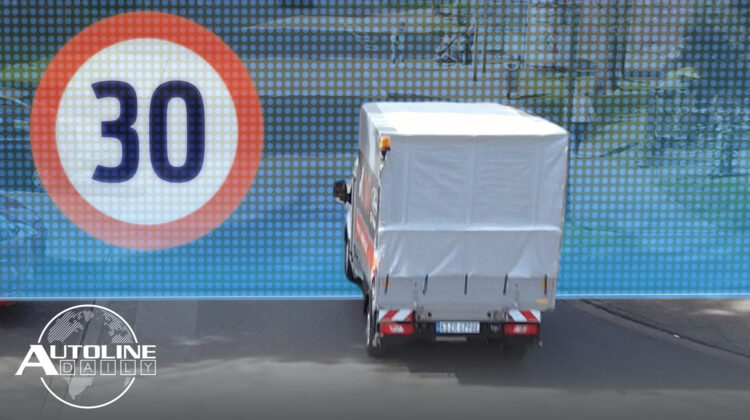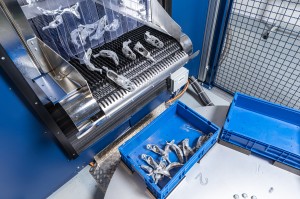
Listen to “AD #3331 – Ford Tech Automatically Reduces Speed; PHEVs Starting to Catch On; China Likely to Ban ICEs” on Spreaker.
Follow us on social media:
Runtime: 8:20
0:07 Toyota Slashes Production Again
0:39 COVID Lockdowns Cripple China’s Sales
1:13 China Likely to Ban ICEs
2:36 Stellantis & Samsung Pick Indiana for Battery Plant
3:18 Ford Using Geofencing to Automatically Reduce Speed
4:12 BMW Implementing 3D Printed Parts Into Production
5:28 Magna Lighting Tech Shines Through Plastic
6:32 PHEVs Starting to Catch On in the U.S.
Visit our sponsors to thank them for their support of Autoline Daily: Bridgestone, Intrepid Control Systems, MEDC and Schaeffler.
This is Autoline Daily, the show dedicated to enthusiasts of the global automotive industry.
TOYOTA SLASHING MORE PRODUCTION
Well, that chip shortage hasn’t gone away. Now it’s forcing Toyota to slash global production by another 100,000 units in June. It only expects to make 850,000 vehicles next month and says it will build that many vehicles on average per month through August. On top of that, Toyota is suspending production of 16 lines at 10 factories in Japan over the next few weeks because of parts shortages caused by the COVID lockdowns in Shanghai.
COVID LOCKDOWNS CRIPPLE CHINA’S SALES
And sales dropped dramatically in China because of those lockdowns. According to the China Association of Automobile Manufacturers, sales were down nearly 50% in April compared to a year ago. Now, Gasgoo reports that the Chinese government plans to cut the passenger vehicle sales tax by nearly $9 billion to help kick start sales. And banks and state-owned automakers will defer principal and interest payments for commercial vehicle loans for six months.
CHINA LIKELY TO BAN ICE VEHICLES SOON
And sticking with China for the moment, the government wants to boost sales of electric vehicles but it hasn’t announced a ban of ICE vehicles like a number of countries have done. However, the Chief Manufacturing Officer at Chinese battery maker CATL, said at the World Economic Forum meeting in Davos that he expects China to ban sales of gasoline and diesel cars by 2035, which is around the same time frame other countries have proposed.
STELLANTIS & SAMSUNG PICK INDIANA FOR NEW BATTERY PLANT
Stellantis and Samsung are going to build a new battery manufacturing plant in the U.S. in Indiana. Back in October, the two companies announced they were going to make lithium-ion batteries with initial production of 23 GWh a year starting in 2025. The plant will eventually ramp up to 40 GWh a year and will be located near the automaker’s casting, engine and transmission plants in Kokomo, Indiana. No word on the amount Stellantis is investing in the project, but securing batteries for future EV plans is critical for all automakers, so there will continue to be a lot of activity.
FORD TECH AUTOMATICALLY REDUCES SPEED
Ford is using connected vehicle technology to test out a system that automatically reduces a vehicle’s speed in certain areas, like school zones. The trial is being conducted in Cologne, Germany and as soon as the vehicle travels in one of the geofenced areas an alert pops up in the cluster showing the new speed limit flashing below the current speed and then it slows down to that speed. Another aspect we find interesting is that the speed limits could be set dynamically. Meaning, slowing vehicles when unexpected issues crop up, like potholes or road work. Ford also says the driver can override the system at any time. This test lasts until 2023 and is part of a bigger trial to use E-Transits in a number of different scenarios.
BMW IMPLEMENTING 3D PRINTED PARTS IN PRODUCTION
We keep hearing more and more news about 3d printing, and now BMW says it’s ready to start implementing 3D printed parts in production. It started on the project three years ago and now operates a fully automated 3D printing production line at its Additive Manufacturing Campus in Germany. It says it can cost-effectively make 50,000 components a year in common parts production as well as an additional 10,000 individual and new parts using 3D metal printing. For us the real benefit is that it’s fully automated, which means it can probably operate 24/7.
MAGNA LIGHTING TECH SHINES THROUGH PLASTIC
If you really want to know about the kind of future tech that will show up on cars, you’ve got to keep an eye on what automotive suppliers are working on. Check out this integrated lighting tech from Magna that could go on thermoplastic liftgates. The lighting is invisible until it’s lit up. But then it shines right through the plastic. It can be used for taillights, brake lights, turn signals, and even backup lights. And it’s reconfigurable, so the lighting can change for different situations, or even be used for styling differentiation. The lighting is crisp and uses zillions of pixels. It can be used to signal or communicate what’s going on with a car, like the charging status of an EV. Or it can even signal the car behind what’s going on ahead of the car it’s following, like a bicycle rider who’s holding up traffic. And it goes beyond lighting. Magna says that ADAS sensors can also be invisibly integrated into the body surface.
PHEV SALES CATCHING ON IN THE U.S.
Sales of electric cars are soaring in the U.S. market. But guess what? Plug-in hybrids are starting to catch on, too. Sales of PHEVs were up nearly 50% in the first quarter, with automakers selling over 43,000 of them. That’s only one-third of the number of BEVs that were sold, but it’s still an impressive gain. And almost all the credit for the increase goes to Stellantis. The PHEV versions of the Jeep Wrangler and Chrysler Pacifica have shot to the top of the sales charts for plug-ins. A year ago the Wrangler PHEV wasn’t even on the market, and sales of the Pacifica plug-in were up 76%. While the Toyota RAV4 PHEV also posted astonishing gains, that was offset by a big drop in sales of the Prius PHEV, so Toyota’s plug-in sales actually dropped in Q1. Even so, as consumers who are shopping for BEVs worry about range anxiety and an inadequate charging infrastructure, PHEVs might be just the solution for them. They can drive on electric power almost everyday, yet still be able to take long trips with piston power.
| TOP 5 PHEVs in the U.S. Q1, 2022 | ||
|---|---|---|
| 1. Jeep Wrangler | 8,199 | —– |
| 2. Chrysler Pacifica | 8,180 | +76% |
| 3. Toyota RAV4 | 5,233 | +87% |
| 4. Toyota Prius | 2,589 | -63% |
| 5. Audi Q5 | 2,074 | -6.1% |
But that wraps up today’s show. Thanks for joining us.
Thanks to our partner for embedding Autoline Daily on its website: WardsAuto.com
Seamus and Sean McElroy cover the latest news in the automotive industry for Autoline Daily.








